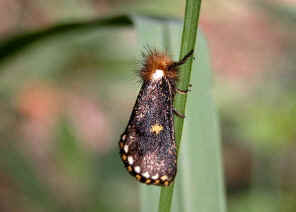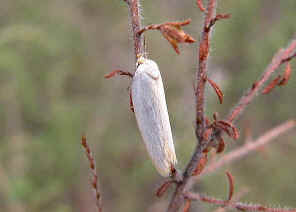Bag Shelter Moths, Processionary Caterpillars - Family NOTODONTIDAE
Most Caterpillars of NOTODONTIDAE will raise their head and/or tail when disturbed. Some of them are hairy but some are smooth with few spines. They are usually colourful and active during the day.

- The NOTODONTIDAE caterpillar raises its head when disturbed.
Some species their caterpillars may be seen in procession, each following the silken thread left by the one in front.
The Moths in this family are active at night.
- Banksia Moth


- Danima banksiae, length 50mm
- The caterpillar was found feeding on Grevillea in Alexandra Hill bushland during late summer. We found quite a number of them on one plant.


- When disturbed, the caterpillar raised its head as the second pictures. We brought two home and try to raise them and see how the adult moth look like, but not success. Their adult moths are grey in colour with black markings. Their abdomen is yellow in colour.
- Yellow Spot Epicoma Moth


- Epicoma tristis, wingspan 30mm
- First picture was taken in Wishart Outlook along Bulimba Creek during mid summer. Second picture was taken On White Hill during early winter, when the moth was sun-bathing on a wattle tree. The moth's forewings are dark brown in colour, with two rows of creamy spots along the wing edges. In the middle of its forewings there is a dark ring with a yellow dot . Their Caterpillars are dark grey with short hair, may be seen in procession. Their host plants include gum tree.
